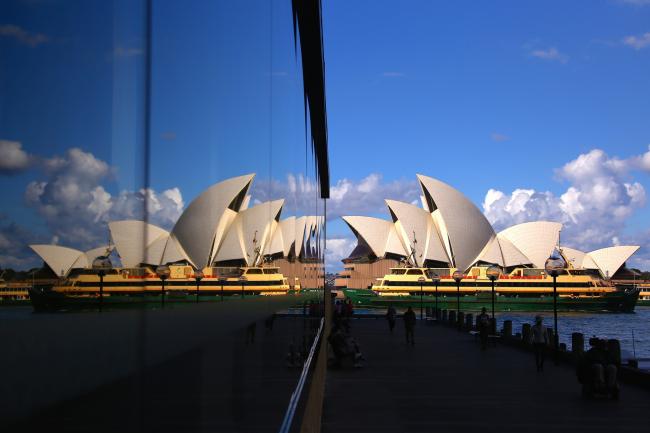(Bloomberg) -- Australia’s central bank governor signaled he’ll stand pat in coming months to observe the impact of back-to-back interest rate cuts, while standing ready to resume easing should the outlook at home or abroad take a turn for the worse.
Reserve Bank chief Philip Lowe, in an evening speech after taking the cash rate down to 1% earlier Tuesday, cited rising risks to global growth if uncertainty from the U.S.-China dispute that has stalled investment doesn’t end. In Australia, he noted low borrowing costs, high commodity prices, a weaker currency and rising household incomes were cause for optimism.
“We will be closely monitoring how things evolve over coming months,” Lowe told community leaders in the northern city of Darwin, according to a text of his speech. “Given the circumstances, the board is prepared to adjust interest rates again if needed to get us closer to full employment and achieve the inflation target in a way that supports the collective welfare of all Australians.”
Lowe’s (NYSE:LOW) move to leave the rate door open reflects a need to keep a lid on the currency -- given major economies are likely to ease -- and an acknowledgment of global volatility generated by the rise of populism and protectionism. Yet he’s keeping a hopeful eye on the horizon as stabilizing property markets and rising iron ore prices and mining investment suggest a return of Australia’s key economic drivers: houses and holes.
This is part of the reason for his positive view, highlighting in his speech that the central scenario for the Australian economy “is still for reasonable growth, low unemployment and low and stable inflation.” At the same time, he highlighted there “is still a fair degree of spare capacity” in the economy and it was possible and desirable to reduce it.
Lowe noted that the exchange rate had depreciated and on a trade-weighted basis was at “the bottom end” of its range of recent times. “This is helping support important parts of the economy,” he said.
The RBA’s visit to Darwin comes a little over 51 years after the last board meeting in the city that’s closer to Jakarta than Sydney. In June 1968, it was presided over by the bank’s first governor, the legendary H.C. ‘Nugget’ Coombs.
Lowe on Wednesday will travel out to East Arnhem Land to unveil a plaque to Coombs, whose ashes are buried at Yirrkala and the Australian National University in Canberra that he helped found.
Lowe cut rates in June and today, having previously stayed on hold for almost three years since taking the helm. Following Tuesday’s cut, futures traders boosted bets the RBA will ease at least once more, though they aren’t confident Lowe will move again until November.
Rising concern about the international environment is reflected in manufacturing taking a hit at the end of the second quarter, signaling a worsening economic outlook that could force the world’s major central banks into action. Investors are pricing in a Federal Reserve rate cut this month and Goldman Sachs Group Inc (NYSE:GS). says the European Central Bank will lower its deposit rate by 20 basis points and restart asset purchases in September.
“The uncertainty generated by the trade and technology disputes between the U.S. and China has made businesses in many countries nervous about investing,” Lowe said.
“Many are preferring to sit on their hands, rather than commit to capital spending that is difficult and costly to reverse,” he said. “The result is less international trade and a weakening trend in investment globally. If this continues for too much longer, the effects on economic growth are likely to be significant. For this reason, the risks to the global economy remain tilted to the downside.”
